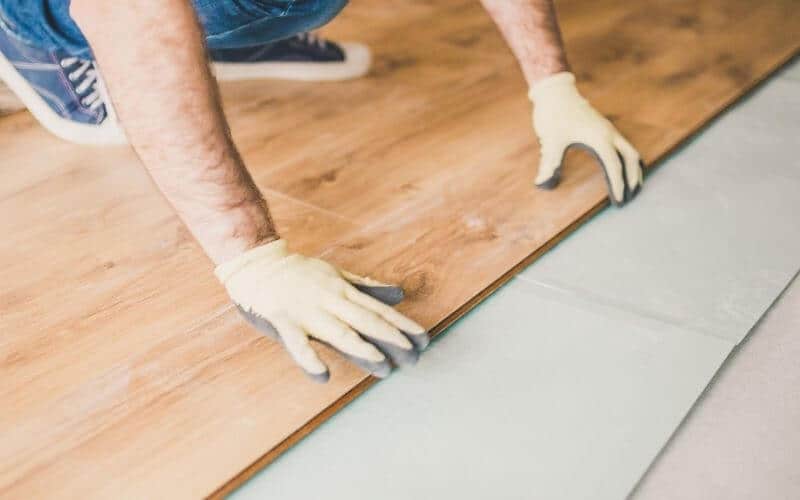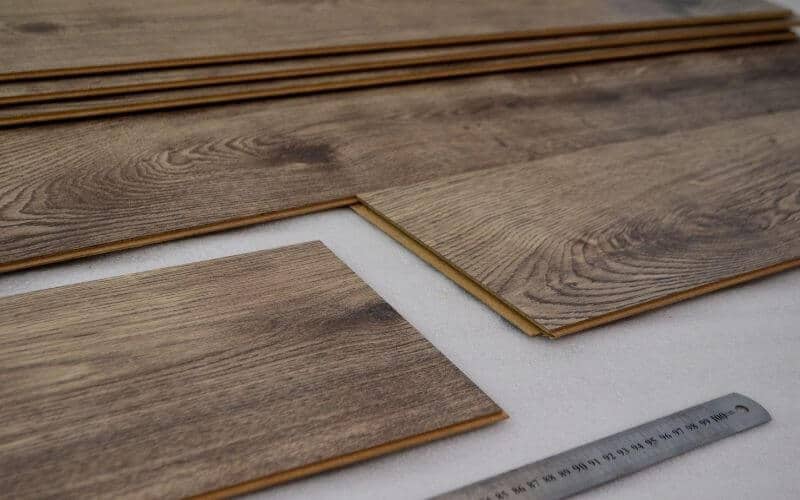Installing a laminate floor over a tile is a welcomed development, as it gives the home an aesthetic look. But it comes with various problems and challenges over time.
The disadvantages of laminate over tile floor include excessive moisture underneath the floor, hollow and creaking sounds, and debris under the floor.
Read on as we discuss these problems in a more detailed fashion below.
Related: 10 Best mops for laminate floors
Laminate Over Tile Problems
Table of Contents
1. Excessive Moisture
Installing laminate over tile in a highly moisturized area might lead to problems. Since laminate is very sensitive to places with high moisture, it can cause warping and buckling.
Tiles can function comfortably in moist areas like the kitchen, laundry room, and other highly moistured places. But this is not so for laminate.
If water normally drips on the floor, it is advised you have it fixed before installing a laminate floor over it.
2. Problems of Uneven Tiles
Uneven tiles can bring about lots of problems to the laminate floor. This includes clicking, hollow and creaking sound when the subfloor contract below. It can be more serious when the floorboards start buckling, thereby leading to bad gashes on your laminate floor.
3. Debris Under the Floor
This problem applies to all flooring types, but it is more prominent in laminate floors. Pebble sprouts can be a major problem regardless of whether your floor is level or even. Make sure to get rid of materials that might unknowingly stick to the floor using a putty knife.
Things to consider before installing laminate over tile
These are things to put into consideration to avoid laminate over tile problems.
1. State of the Tile Floor
Laminate floors require a durable and clean subfloor area. And tile floors serve this purpose because they are sturdy and easy to clean. But then, if a tile is badly installed or old, it might crumble or form gashes.
2. Underlayment
Underlayment is a sort of foam or paper that you use to seal the whole of the floor between the tile and laminate floor. This is very important as it helps reduce noise caused by footsteps on the laminate floor. It creates moisture barriers and makes the floor float easily.
3. Added Height of the Floor
This normally affects areas like the doorways and transitions. The added height might cause scratches when the door makes a screeching contact with the floor. So, the space between the floor and the doorway or transition requires a gap for easy movement.
4. Leveling the Floor
It is of the essence that the laminate floor is installed over a leveled subfloor. You would have to ensure that the floor level is even, without any rock sprouting. Doing this helps prevent cupping, buckling, and deep gashes.
Can You Put Laminate Over Ceramic Tiles?
Can you put laminate over ceramic tiles? The answer is yes! Trying to remove ceramic tile from the subfloor can be a whole lot of handwork. Chipping off old tiles and mortar can be enervating and time-wasting.
So, if a laminate can be placed over a ceramic tile, it would save strength and reduce the installation price.
Related: How to achieve a shiny laminate floor
Conclusion
Installing laminate over tile is a welcomed development, but it comes with some challenges if not properly salvaged. You can avoid this if the right steps to prevent its occurrence are taken.

